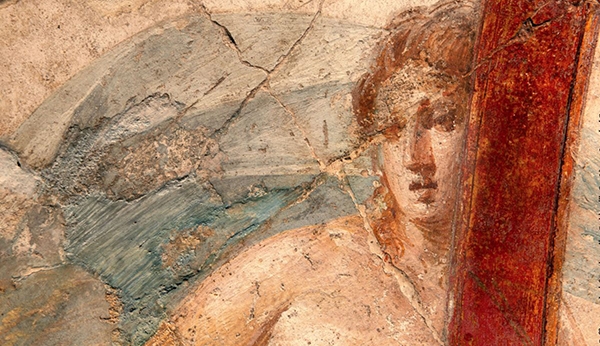Opening Archaeological Museum of Castellammare di Stabia Libero D’Orsi
On the 24th of September, 2020 in the historical setting of the Reggia di Quisisiana, the inauguration will take place of the Archaeological Museum of Castellammare di Stabia (Museo Archeologico di Castellammare di Stabia) a new museum specifically for exhibiting the many important items found in the region of Stabia. The preparations, curated and sponsored by the Parco Archeologico di Pompei (the Archaeological Park of Pompei) in coordination with Electa, is restoring the oldest sites of the Bourbon kings – a symbolic building boasting a history of over seven centuries – to the heritage of Italy, together with precious evidence of daily life, particularly how people lived both in the Roman holiday villas (luxury residences intended for the relaxation of body and mind, from their activities and business affairs) and in the country villas (similar in concept to modern farms), sited with panoramic views over the Bay of Naples.
The Museum will be named after Libero d’Orsi (1888-1977), the president who in the 1950’s, initiated the rediscovery of the Villas of Stabia, which had previously been explored in the period of the Bourbons.
There is a large number of finds on display, some never before exhibited in Italy, including frescoes, inlaid floors, stuccoes, sculptures, terracottas, tableware, objects made of iron and bronze, some already kept in the Antiquarium of Stabia, displayed in the city centre by Libero d’Orsi but closed to the public from 1997.
The tour through the exhibits of the museum, a scientific project curated by the Parco Archeologico di Pompei, (the Archaeological Park of Pompei) is intended to provide an overall picture of Stabia and of the Ager Stabianus from the earliest times until the volcanic eruption in 79 CE.
The first rooms are dedicated to the history of the Reggia di Quisisana and its archaeological explorations, with special attention to the excavations by the Bourbons and by Libero d’Orsi.
Next comes pre-Roman Stabia, illustrated by votive material from the sanctuary in the village of Privati (mid-4th – end of the 2nd cent. BCE) dedicated to a goddess, and by the grave goods from the ancient necropolis in Via Madonna delle Grazie (from the second half of the 7th cent. to the end of the 3rd cent. BCE).
Instead, the Roman period, until 79 CE, has been reconstructed chronologically and topographically, with more attention to certain topics.
In the region of present-day Castellammare di Stabia (Stabiae), in the Roman period there were several holiday villas with panoramic views, intended principally as residences, with vast living quarters, thermal baths, porticoes and lavishly decorated nymphaea or grottoes.
The visitor’s journey through this historical period starts with the famous villas built on the plateau of Varanium. Their extraordinary decorations are shown (especially sculptures and frescoes): from Villa San Marco to Villa del Pastore, from the Second Complex to Villa Arianna.
The decision to begin with Vila San Marco – covering an area of 11,000 square metres, and so one of the largest residential villa in Stabia, is also because it was next to the ancient town centre and in fact it serves to illustrate Pliny’s description of the destruction of Stabia by Silla in 89 BCE. After the section devoted to the plateaus of Varano, there are the villa del Petraro (commune of Santa Maria la Carità), an important complex from which have come stuccoes that adorned luxurious thermal baths and the villa of Carmiano (commune of Gragnano) the heart of the permanent exhibition.
The villa of Carmiano is one of 50 country villas in the ager Stabianus, a region with a number of small properties (country villas covering between 400 and 800 square metres) adapted for the cultivation of vines and olive trees.
In this section, especially on the theme of food, introduces the visitor to the exhibit of the dibbing- room (triclinium) of Carmiano: food, from its preparation to its consumption, is illustrated by tableware in bronze, terracotta and glass, by kitchenware and amphorae, which provide a snapshot of an important moment in daily life, namely conviviality.
The frescoed walls of a triclinium (dining-room), from the villa di Carmiano, are re-erected midway along the visitor’s route. On these walls are Dionysian scenes that refer to the production of wine, one of the main activities in the agricultural section of the villa.
The extraordinary cart made of bronze from Villa Arianna, exhibited for the first time with its harness, is a starting-point for knowing more about the agricultural work and typical products of the region of Stabia: the many examples of tools retrieved from the villas – as well as amphorae and household shrines (lararia) from the countryside – closes the visitor’s route with the theme of making produce that gave the villas in Stabia and around Vesuvius generally, their prosperity.
With the inauguration of the Museo Archeologico di Castellamare di Stabia (the Archaeological Museum of Castellamare of Stabia), both citizens and tourists now have a new space for exhibitions, of vital importance for knowing and appreciating the archaeological heritage of Campania. It is a museum that will combine the cultural contribution and the archaeological circuit of ancient Stabia with the sets of sites that can be visited in Villa San Marco and Villa Arianna.
Furthermore, an expansion of the exhibition route is being planned. It will include the possibility of visiting – after several decades – the decoration of the ramp connecting the lower peristyle of the Villa San Marco with its upper peristyle, which will be reconstructed for public viewing.
The frescoes need to be restored and reconstructed – a project that will be carried out by Art Bonus, with the hope of support from private individuals, who could benefit from tax relief as provided by the law and take pleasure in having helped to place these significant finds in a museum.
https://artbonus.gov.it/2267-parco-archeologico-di-pompei.html
For information: pompei.fundraising@beniculturali.it


